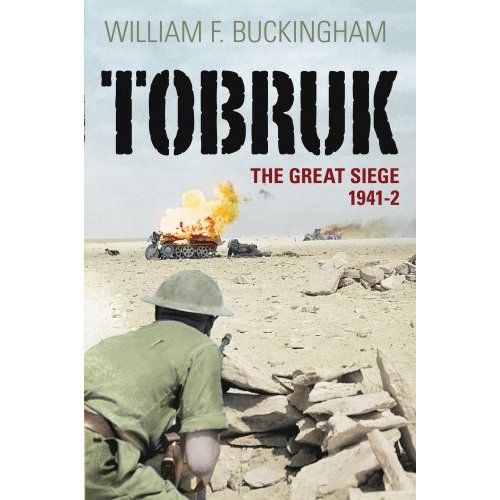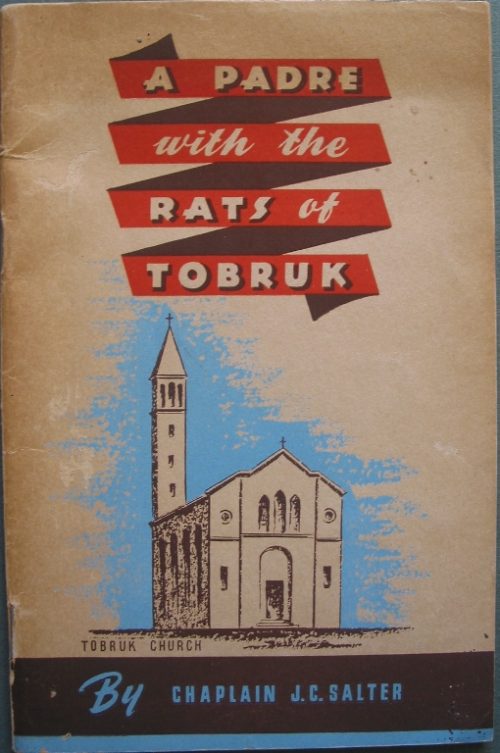Description
Title: The Rats Remain – The Siege of Tobruk 1941
Author: Cumpston, John
Condition: Very Good Plus
Edition: 1st Edition
Publication Date: 1966
ISBN: N/A
Cover: Hard Cover – with Dust Jacket – 256 pages
Comments: A concise pictorial account of the Battle of Tobruk. One of the best written titles, about the Battle of Tobruk.
Following the fall of Bardia, 7th Armoured Division with Australian 19th Brigade advanced to Tobruk which was isolated by the 7th Armoured Division on the 6 January. By 9 January it was surrounded. After a twelve day period building up forces around Tobruk, O’Connor attacked on 21 January and Tobruk was captured 22 January, yielding over 25,000 prisoners along with 236 field and medium guns, 23 medium tanks and more than 200 other vehicles. The Australian losses were 49 dead and 306 wounded. Some fierce fighting took place and a company was forced to withdraw in an Italian counter-attack, in which the Australian troops lost 100 killed, wounded and captured.
There were approximately 25,000 Italian defenders at Tobruk under the overall command of General Petassi Manella, commander of the XXII Corps. Besides “fortress troops,” the defenders comprised the 61st “Sirte” Infantry Division, sixty-two tankettes, twenty-five medium tanks, and some two-hundred guns. The perimeter was about thirty miles long and was fortified with a combination of anti-tank ditch, wire, and a double row of strongpoints. In many ways the defenses at Tobruk were a replica of the defenses at Bardia.
The Allied infantry force comprised the 16th, 17th and 19th Brigades of Australian 6th Division under Major-General Iven Mackay supported by the 16 remaining Infantry tanks of 7 RTR and the machine-gun battalions of the Northumberland Regiment and Cheshire Regiment. 7th Armoured Division with its unit of Free French Marines were to play the same containing role they had at Bardia. Given the lack of tank numbers, heavy artillery bombardment was used to soften the Italian defenses. With their Browning machine guns, and four bombs each, the Vickers Wellington and Blenheim bombers also played an important part in the softening up of defenses of the Tobruk garrison.
On the morning of 21 January, the assault went in under the cover of darkness. Once it appeared that the 2/3rd Battalion had breached the Italian defenses, the leading companies of the 2/1st Battalion started their advance. However, one of the companies ran into booby-traps that killed or wounded several in a platoon. Major Abbot’s company was given the task of clearing the forward platoon outposts, which it took after some confused fighting, having initially been held up by Post 55. Sergeant Hoddinot hurled grenades to overcome the bunkered platoon. At Post 62, despite tank and artillery fire, the enemy stood firm. Lieutenant Clark poured a mixture of crude oil and kerosene through the gap in the bunker to silence it. Eleven Italians died and 35 surrendered. As Captain Campbell’s company reached the end of the first phase of the advance it came under fire from dug-in tanks. Captain Anderson and Lieutenant Russell were wounded and Lieutenant Russell killed. Despite encountering some stiff opposition, the 2/8th Battalion took 1,300 prisoners. At the same time, Italian gunners brought down fire on the battalion and Italian infantry counterattacked with the support of nine tanks. Under pressure from this strong battalion force, Campbell’s company was forced to withdraw, having lost 100 killed, wounded and captured. At this point help arrived in the form of two British Matilda tanks. The companies fought their way forward with grenade, Bren, rifle and bayonet. They were met by a hail of fire. Lieutenant Trevorrow and Sergeant Duncan were seriously wounded, and two of the platoon commanders had bullet holes in their clothing or equipment. At this point Captain McDonald called forward two of the British Infantry tanks to engage a platoon holding Post 42. Some close-quarter fighting saw the enemy cleared from Post 41. As Captain Abbot’s company continued its advance it came under fire from the Italian platoons dug in Posts 34 and 35, and was forced to withdraw.
During the night 19th Brigade HQ attempted to negotiate a ceasefire with the commander of the Italian XXII Corps and garrison in Tobruk. It was hoped they would succeed, but a telephone call from the Italian supreme command put paid to their efforts. Mussolini himself had spoken personally to General Manella, forbidding him to surrender, and informing him that squadrons of Italian bombers were on their way as reinforcements. Later that night Italian SM.79s carried out a surprise low-level attack, which bombed some 8,000 prisoners who had been gathered inside a fenced enclosure, killing and wounding hundreds of their men. This bombing broke the will of many among those still prepared to fight.
In the end, General Manella surrendered some 12 hours after the fighting began. But Manella refused to order the surrender of his forces. This meant that it took a further day to clean up any resistance.
Next day, the capture of the remaining outposts from R1 to S11 was completed and assisted strongly by Infantry tanks of the Support Group and the 2nd Rifle Brigade and 1st King’s Royal Rifle Corps which had arrived as reinforcements that morning. Meanwhile, the 7th Armoured Division which had also entered the perimeter from the Derna road that morning stood by to advance into the town if required.
On the afternoon of 22 January, Brigadier-General Vincenzo della Mura and the remaining 17,000 defenders surrendered. General della Mura was the commander of the 61 Infantry Division Sirte. The Italians had lost 25,000 killed, wounded and captured. The Australians by comparison had 400 killed, wounded and captured.




